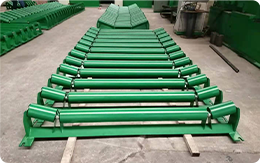 Afrikaans
Afrikaans  Albanian
Albanian  Amharic
Amharic  Arabic
Arabic  Armenian
Armenian  Azerbaijani
Azerbaijani  Basque
Basque  Belarusian
Belarusian  Bengali
Bengali  Bosnian
Bosnian  Bulgarian
Bulgarian  Catalan
Catalan  Cebuano
Cebuano  Corsican
Corsican  Croatian
Croatian  Czech
Czech  Danish
Danish  Dutch
Dutch  English
English  Esperanto
Esperanto  Estonian
Estonian  Finnish
Finnish  French
French  Frisian
Frisian  Galician
Galician  Georgian
Georgian  German
German  Greek
Greek  Gujarati
Gujarati  Haitian Creole
Haitian Creole  hausa
hausa  hawaiian
hawaiian  Hebrew
Hebrew  Hindi
Hindi  Miao
Miao  Hungarian
Hungarian  Icelandic
Icelandic  igbo
igbo  Indonesian
Indonesian  irish
irish  Italian
Italian  Japanese
Japanese  Javanese
Javanese  Kannada
Kannada  kazakh
kazakh  Khmer
Khmer  Rwandese
Rwandese  Korean
Korean  Kurdish
Kurdish  Kyrgyz
Kyrgyz  Lao
Lao  Latin
Latin  Latvian
Latvian  Lithuanian
Lithuanian  Luxembourgish
Luxembourgish  Macedonian
Macedonian  Malgashi
Malgashi  Malay
Malay  Malayalam
Malayalam  Maltese
Maltese  Maori
Maori  Marathi
Marathi  Mongolian
Mongolian  Myanmar
Myanmar  Nepali
Nepali  Norwegian
Norwegian  Norwegian
Norwegian  Occitan
Occitan  Pashto
Pashto  Persian
Persian  Polish
Polish  Portuguese
Portuguese  Punjabi
Punjabi  Romanian
Romanian  Russian
Russian  Samoan
Samoan  Scottish Gaelic
Scottish Gaelic  Serbian
Serbian  Sesotho
Sesotho  Shona
Shona  Sindhi
Sindhi  Sinhala
Sinhala  Slovak
Slovak  Slovenian
Slovenian  Somali
Somali  Spanish
Spanish  Sundanese
Sundanese  Swahili
Swahili  Swedish
Swedish  Tagalog
Tagalog  Tajik
Tajik  Tamil
Tamil  Tatar
Tatar  Telugu
Telugu  Thai
Thai  Turkish
Turkish  Turkmen
Turkmen  Ukrainian
Ukrainian  Urdu
Urdu  Uighur
Uighur  Uzbek
Uzbek  Vietnamese
Vietnamese  Welsh
Welsh  Bantu
Bantu  Yiddish
Yiddish  Yoruba
Yoruba  Zulu
Zulu idler roller
Understanding Idler Rollers Importance, Design, and Applications
In the world of mechanical engineering, idler rollers play a crucial role in various industries, particularly in material handling systems, conveyor belts, and mining operations. These components, often overlooked, are instrumental in ensuring the smooth operation of machinery, facilitating efficient material transport while minimizing wear and tear on the equipment.
What is an Idler Roller?
An idler roller is a cylindrical component that provides support and guides the movement of materials along a conveyor belt or similar systems. Unlike drive rollers, which are powered and responsible for moving the belt, idler rollers are passive. Their primary function is to maintain the tension of the belt, support the load being transported, and minimize friction. They are usually mounted in a frame and strategically placed along the length of the conveyor system to ensure optimal performance.
Importance of Idler Rollers
Idler rollers are essential for several reasons
1. Load Distribution They distribute the load across the conveyor belt evenly, which prevents localized stress and potential damage to both the belt and the idler itself. This even distribution is critical in ensuring the longevity of the conveyor system.
2. Belt Alignment Properly positioned idler rollers help maintain the alignment of the conveyor belt. Misalignment can lead to increased friction, wear and tear, and ultimately, a breakdown of the system. Idler rollers aid in keeping the belt centered, ensuring a smooth and efficient operation.
3. Reducing Friction and Wear By creating a smooth surface for the belt to travel over, idler rollers significantly reduce friction. This not only enhances the efficiency of the system but also lowers the energy required to operate it, promoting sustainability.
4. Facilitating Maintenance Idler rollers make it easier to conduct maintenance and inspections on conveyor systems. By providing access points and stable surfaces, maintenance teams can quickly identify and fix issues before they escalate into more significant problems.
Design Considerations
When designing idler rollers, several factors need to be considered
idler roller

- Material Idler rollers are typically made from steel, polyurethane, or a combination of materials that offer durability and resistance to wear. The choice of material depends on the application, load requirements, and environmental conditions.
- Diameter and Length The diameter and length of the idler rollers affect their performance. A larger diameter roller can reduce friction, while the length must be appropriate for the width of the conveyor belt to ensure effective support.
- Bearing Types Idler rollers can be equipped with different types of bearings, impacting the roller's performance and lifespan. Sealed bearings are commonly used for their ability to keep contaminants out, while some applications may require open bearings for easier maintenance.
Applications of Idler Rollers
Idler rollers are found in various applications across multiple industries
1. Mining In mining operations, idler rollers are crucial for transporting heavy materials like coal, ore, and minerals. They withstand harsh environments and heavy loads, ensuring that materials move efficiently from one point to another.
2. Manufacturing In manufacturing plants, idler rollers are utilized in assembly lines and packaging systems, providing smooth transport for different products as they move throughout the production process.
3. Food and Beverage Industry Conveyor systems in the food industry rely on idler rollers for transporting ingredients and packaged goods. These rollers are designed with hygiene in mind, often featuring materials that are easy to clean and resistant to contamination.
4. Logistics and Warehousing In logistics, idler rollers are key components in sorting systems and automated warehousing, enabling fast and efficient movement of packages and goods through various points in a supply chain.
Conclusion
The idler roller, though a simple mechanical component, is fundamental in enhancing the efficiency and reliability of conveyor systems across diverse applications. Understanding its significance can lead to better maintenance practices, improved system performance, and ultimately, a more productive operation. As industries continue to evolve, the role of idler rollers will remain pivotal in the quest for greater efficiency and performance in material handling and transportation systems.
-
Revolutionizing Conveyor Reliability with Advanced Rubber Lagging PulleysNewsJul.22,2025
-
Powering Precision and Durability with Expert Manufacturers of Conveyor ComponentsNewsJul.22,2025
-
Optimizing Conveyor Systems with Advanced Conveyor AccessoriesNewsJul.22,2025
-
Maximize Conveyor Efficiency with Quality Conveyor Idler PulleysNewsJul.22,2025
-
Future-Proof Your Conveyor System with High-Performance Polyurethane RollerNewsJul.22,2025
-
Driving Efficiency Forward with Quality Idlers and RollersNewsJul.22,2025





























